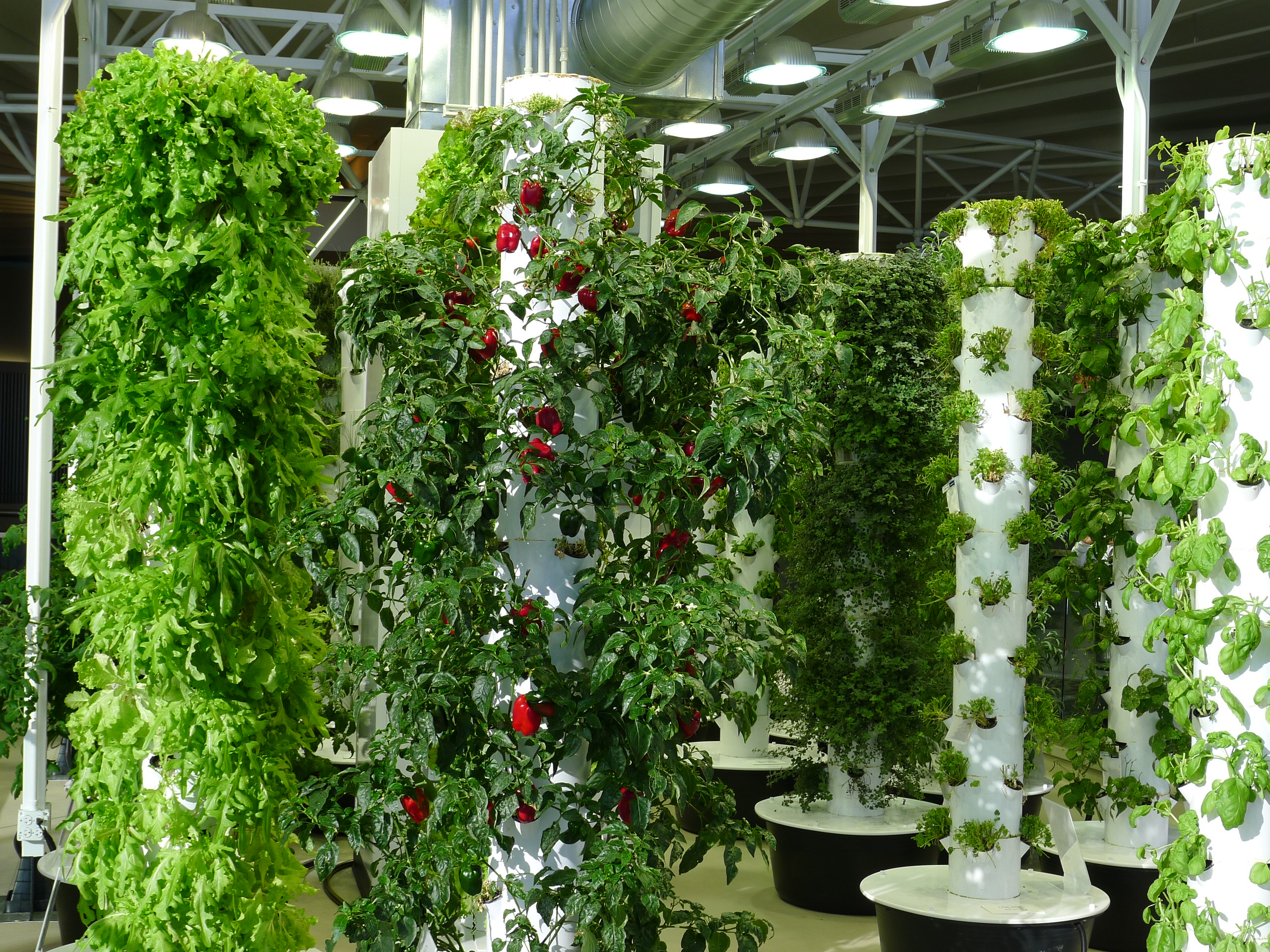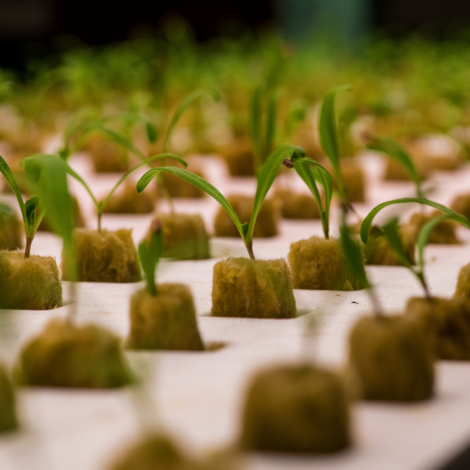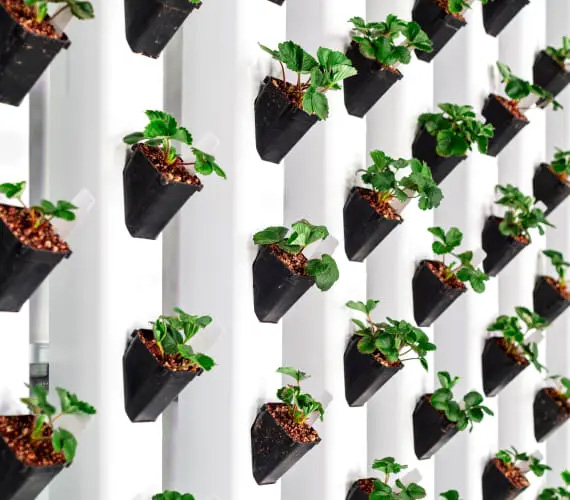Traditional farming in Africa has not been able to provide food security for the entire continent. In part, that is because farms are crippled by climate change and cannot keep up with overpopulation. The continent’s population approaches 1.5 billion, accounting for 18% of the global total. And feeding those people has become harder in a changing climate. Since 1961, climate change has reduced agricultural productivity in Africa by 34%, according to a study by Ariel Ortiz-Bobea at Cornell University in Ithaca, New York (USA) and colleagues.
Vertical farming presents a promising solution. Farms built upwards rather than in the soil can transform the continent’s traditional agriculture using known, practical and locally available technologies.
The Vertical Farming Advantage
Vertical farms stack crops in layers, usually without soil and usually in in a controlled environment indoors or in a greenhouse. These farms maximize space, reduce water consumption and minimize pesticide use. In optimal conditions, a vertical farm can yield 50 to 100 times more per square foot than traditional farms.
By stacking crops vertically, farmers can grow more food on a small land footprint. Their size, shape and readily available parts make them adaptable and scalable, ideal for urban spaces, rooftops, and warehouses. Crops such as leafy greens, herbs, fruiting vegetables, and root vegetables thrive in vertical farms, where space efficiency is maximized. This allows for high-yield farming in urban areas in Africa with high population density, and high land prices like Cairo, Egypt, and Lagos, Nigeria.
Building farms in urban centers has added advantages in cutting the need for long-distance transportation. The result is lower carbon emissions and fresher produce for consumers.
These farms excel in water efficiency. Crops grow without soil in hydroponic, aeroponic, or aquaponic systems that use up to 90% less water than traditional farms. Removing soil also reduces the need for pesticides and herbicides, resulting in a gentler environmental impact and healthier food. Indoor systems may require grow lights, which can be powered by solar panels or other renewable energies for added sustainability.
One more advantage: yields are no longer at the mercy of the weather. The controlled indoor environments of vertical farms enable continuous, year-round production, unaffected by seasonal changes or adverse weather.
The Parts
Vertical farms rely on a combination of mechanical and electrical systems to function efficiently. Mechanical and electrical systems synergize to create optimal conditions for plant growth.
Mechanical systems, such as trays and racks, support the physical structure of plants, while irrigation systems ensure precise water and nutrient delivery. Climate control is maintained through HVAC systems, which, along with CO2 enrichment, tailor the environment to the crop’s needs. Water recycling systems conserve resources, and harvesting systems range from simple manual tools to sophisticated robotics. Packaging and processing equipment streamline the post-harvest workflow, and pest control is managed through a combination of physical barriers and integrated pest management (IPM) strategies.
On the electrical side, lighting systems with LED grow lights and reflective surfaces provide energy-efficient illumination, crucial for photosynthesis. Climate control is further refined with fans, heaters, and chillers. Sensors and monitoring systems continuously track environmental conditions, nutrient levels, and water quality, feeding data back to automation and control systems that adjust parameters as needed. Energy systems, often incorporating renewable sources like solar panels and wind turbines, power the entire operation. Electrically controlled pumps and valves manage irrigation with precision, and harvesting systems benefit from motorized assistance. Pest control also leverages electronic systems to monitor and manage potential infestations.
These components work together to create an optimized environment for plant growth, ensuring sustainability and efficiency.
Local materials, inclusive design

This example of vertical farming uses low-cost materials. Photo: Alvin Kho (CC BY-SA 2.0)
Many locally sourced materials can be used to build low-cost vertical farms in Africa. Bamboo can replace metal for greenhouse frames, wood can be used for growing shelves, and recycled plastic can be repurposed for growing troughs, water tanks, and irrigation pipes. Additionally, clay and stone can be used for foundations and insulation, while natural fibers like jute or hemp can serve as plant containers or shade covers. Renewable energy sources, such as solar panels and biomass systems, can power lighting and climate control.
Engaging local labor and leveraging regional expertise ensures vertical farms are well-suited to the environment while strengthening the local economy. Harvesting tools and post-harvest processing equipment can be made by local artisans, and indigenous plants can be used for organic pest control. Traditional African farming practices, such as crop rotation and organic composting, have long promoted sustainability, and combining these methods with vertical farming can enhance food production, especially in urban areas or regions affected by climate change.
Read More: How to Build a Vertical Aquaponic System
The key to successful integration lies in inclusive design, where local farmers are treated as stakeholders, and their knowledge of ecosystems and crops informs vertical farming practices. This approach recognizes that local expertise is invaluable and should guide the development of agricultural technologies. By empowering local farmers and involving them in decision-making processes, Africa can create a modern agricultural system that blends new technology with traditional practices. Such a system not only enhances productivity but also fosters a sense of ownership and responsibility among farmers. Ultimately, this collaboration ensures sustainable and resilient food production for the future, adapting to local needs and environmental conditions.
Building vertical farms in Africa offers a strategic and innovative solution to address the continent’s agricultural challenges, such as urbanization, limited arable land, water scarcity, and the need for food security in regions with harsh climates. A transformation of this scale takes work. But vertical farms offer a practical path forward using local materials and local labor. By adopting vertical farming, African countries stand to boost crop yields, create jobs, and reduce environmental impact.
About the Author
Oyeshile Oluwatobi is a former E4C Fellow and a mechanical engineer with expertise in hardware design, design for manufacturing, additive manufacturing, and industrial design.


This article makes the classic mistake that pretty much all vertical farming articles do – of comparing Vertical Farms with traditional farms. The problem is that when you compare this with state-of-the art modern greenhouses (like the Dutch moving gullys for example), you get a very different answer, because modern greenhouses have pretty much all the positive features described above, but far fewer of the negatives – in particular the energy requirements of Vertical Farms far far exceed horizontal greenhouses. As a result vertical farms produce food at a far higher cost (both financial and impact) than regular greenhouses and have been going broke all over the place despite raising lots of investment from people who like the snappy videos and don’t actually do their research !